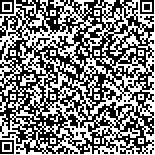下载中心
优秀审稿专家
优秀论文
相关链接
摘要

国内外针对陆地水体信息提取、洪涝灾害快速响应方面具有较深入的研究,但是多采用发展较早、图像质量可靠的可见光影像及国外星载SAR影像。中国合成孔径雷达(SAR)卫星高分三号(GF-3)已获取了大量多极化、全极化SAR数据,为了将GF-3影像快速应用到环境保护、水资源管理等行业中,本研究分析了水体与其他目标具有的不同后向散射特性,将阈值分割法与马尔可夫随机场(MRF)相结合,发展了一种检测精度较高、自动化程度强的水体信息提取方法。该方法首先通过直方图统计的方法对不同成像模式、不同极化的GF-3影像进行后向散射强度分析,在阈值分割的研究基础上,比较了最大类间方差法(Otsu)和Kittler and Illingworth(KI)二值化法在水体-非水体分类中的效果。然后结合DEM和GF-3轨道参数排除因阴影现象产生的辐射失真对图像概率分布的影响,得到初始的水体信息分布图,再经过Fisher变换和马尔可夫随机场(MRF)的迭代运算,综合利用GF-3影像的多极化信息和空间上下文信息,以最大后验概率准则输出最终的水体分布图。利用了湖南省东北部不同成像模式的两景GF-3影像进行试验,在成像时间接近的光学影像中随机选择检验样点进行精度评价。实验结果表明,KI方法在GF-3水体提取应用中比Otsu方法具有更强的优势,剔除图像阴影区域后,自动化确定的阈值与目视解译阈值更加接近,通过MRF模型优化以后,实现了对水体信息的连贯提取,对图像噪声具有较强的抑制作用。本研究对水体目标的提取精度均达到了85%以上,实验结果精度优于基于光学影像的水体指数法,整个流程需要很少的人工经验参与,具有自动化程度强、检测精度高的优势。
The Chinese Synthetic Aperture Radar (SAR) satellite GF-3 has acquired a large volume of multi-polarization and full-polarization SAR data. Moreover, researchers at home and abroad have conducted in-depth studies on the extraction of inland water body images and proposed rapid response mechanisms against flood disasters. However, optical remote sensing images and foreign space SAR images remain widely used because of their long development history and reliable image quality.
Applying domestic GF-3 images to environmental protection and water resources management is an urgent matter. This study analyzed the differing backscattering characteristics of water bodies and other targets to explain the rationality of the threshold segmentation method; integrated the image binarization method based on threshold segmentation and Markov random field (MRF); and developed a method with advantages of high accuracy and high automation for water body information extraction by using GF-3 images. The method first analyzed the backscattering intensity differences of water and nowater distribution under different imaging modes and different polarization modes based on histogram statistics. The best segmentation threshold was determined by using visual interpretation. The effects of the Otsu and KI binarization methods on the water-nowater classification were compared on the basis of the research results of threshold segmentation. The threshold segmentation result of the KI method was better than that of the Otsu method. Given that the radar beam cannot illuminate the large mountain slope facing away from the SAR sensor (i.e., a phenomenon that has led to missing monitoring information), the current SAR orthorectification is applied to compensate the missing data by using the interpolation method, but this approach may result in inaccuracies in feature monitoring. Scholars at home and abroad typically use the method of removing shadow areas from water distribution maps. However, the pixel value obtained by the interpolation cannot represent true backscattering intensity information, which can then affect the distribution characterization of the image and reduce the accuracy of automatic threshold estimation. In response to this problem, this study generated a mask file, also called Mask, of the radiation distortion region by combining DEM and GF-3 orbital parameters. In this manner, the radiation distortion region is masked in the SAR logarithmic intensity map, and the influence on the probability distribution of the image can be eliminated to a great extent. The initial water distribution map can be obtained by KI threshold segmentation, which has good accuracy. Fisher transform is a data dimension reduction algorithm that converts multidimensional data into one-dimensional data, and this approach is beneficial to image classification. In this study, the multipolar logarithmic intensity image is converted into a single variable by the Fisher transform under the guidance of the initial water-nowater distribution map derived by the KI method. Although traditional methods, such as multi-look and filtering, can greatly reduce the noise level of SAR images, these methods also tend to lose useful image information. MRF can determine the class attribute of a pixel by using the maximum posterior probability criterion and by fusing spatial context information with pixel gray information (i.e., an approach with good inhibitory effect on speckle noise). Moreover, the posterior probabilities of the pixels in the water and nowater classes in this study are calculated iteratively. With Fisher transform and MRF based on Gaussian distribution. When the number of iterations has been satisfied or the posterior probability has become stable, the final water distribution map is generated on the basis of the maximum posteriori probability criterion.
Experiments were performed by using multi-polarization GF-3 images under different imaging modes. The images represent the northeast part of Hunan Province where many rivers and lakes abound. Floods in the rainy season are very severe in Hunan Province. Thus, real-time monitoring of water body distribution is necessary. A random point was selected to evaluate the accuracy of using optical images in this study and by setting close imaging times with GF-3. The true detection accuracy, which denotes the proportion of correctly classified pixels in the total pixels, was used to quantitatively evaluate the accuracy of water distribution.
The experimental results show that the KI method has stronger advantages than the Otsu method in terms of water extraction application by using GF-3. After Mask was used to remove the radiation distortion area of the image, the auto-determined threshold yielded a value that was close to the visual interpretation threshold, and the difference was only 0.4 dB. However, the accuracy was low due to the existence of the nowater class within the water class. By optimizing the Fisher transform and the MRF model, the continuous extraction of water information was achieved, and the boundary of the river and the lake became smoother than that of the KI method. The extraction accuracy of the water targets exceeded 85%, which is superior to that of the water index method that use optical images.
Extracting water information with the threshold segmentation method from SAR images is a reasonable method. The capability of cross-polarization (HV, VH) to distinguish water and nowater classes is stronger than that with the same polarization (HH, VV). Radiation distortion areas have certain influences on the probability density distributions of intensity images. Thus, deriving the exact segmentation threshold by removing the radiation distortion areas is imperative. The Fisher transform and the GD-MRF model can be used to fuse multipolar information and spatial context information, and they can effectively suppress the influence of speckle noise. The method requires minimal artificial experience, and it offers the advantage of strong automation and high reliability.

